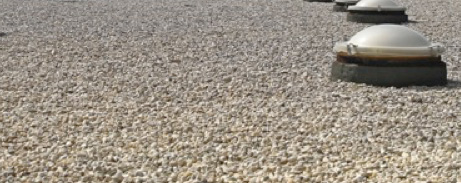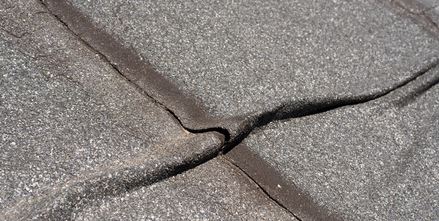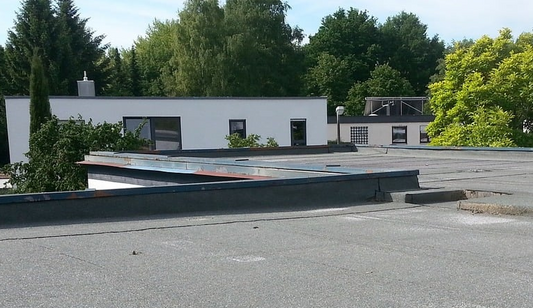You'll need to inspect your fibreglass flat roof carefully to identify signs of damage, such as cracks, blisters, or soft spots, and make a list of the materials you'll need to repair them.
Prepare the surface by cleaning and keying the area around the damage, then mix a repair mixture according to the manufacturer's instructions and apply it to the damaged area, filling it in completely.
Press the mixture firmly into the edges and corners to eliminate air pockets, and use a putty knife or trowel to spread it evenly.
From here, you can take the next steps to guarantee a watertight finish.
Key Points
- Inspect the fiberglass flat roof carefully to identify signs of damage and plan a repair strategy accordingly.
- Clean and key the damaged area to ensure a strong bond between the old roof and the new repair material.
- Mix the repair mixture according to the manufacturer's instructions and apply it to the damaged area, filling it in completely.
- Use additional repair materials and techniques, such as fiberglass matting, roofing felt, and epoxy-based adhesives, to provide extra layers of waterproofing and protection.
Identifying Damage and Materials
You'll need to inspect your fiberglass flat roof carefully to identify signs of damage, such as cracks, blisters, or soft spots, before starting any repairs.
This assessment will help you determine the extent of the damage and the materials you'll need to fix it. Take a closer look at the roof's surface, checking for any signs of wear, such as faded or discolored areas. Check the edges and corners, where damage often occurs, and inspect the flashing and sealants around vents, skylights, and other roof penetrations.
Make a list of the materials you'll need to repair the damage, including fiberglass resin, matting, and any necessary tools like brushes, rollers, or sandpaper. Alternatively, purchase a grp fibreglass roof repair kit.
If you're dealing with blisters or soft spots, you may need to replace the damaged area entirely. Identifying the type and extent of damage will help you plan your repair strategy and guarantee you have the right materials on hand.
Preparing the Flat Roof
With your materials ready and damage assessment complete, it's time to prepare the flat roof for repair by cleaning and keying the area around the damage. This step is vital in guaranteeing a strong bond between the old roof and the new repair material.
To prepare the area, you'll need to use a disc sander to clean down the edges of the repair zone and remove obtrusive damage material.
- Clean the area with Acetone to remove obstructions and prepare for bonding.
- Sand an area of 2-3 inches in circumference around the damage to key the zone, but avoid sanding down past the fibreglass under-layer.
- Prepare the area for bonding by removing any obstructions.
- Verify the surface is clean, dry, and free of contaminants before applying the repair mixture.
Cleaning the Repair Area
Cleaning the repair area involves two essential steps:
First, use a disc sander to remove obtrusive damage material and smooth out the edges of the repair zone. This is pivotal in preparing the surface for bonding. As you sand, make sure not to sand down past the fibreglass under-layer. You'll want to clean an area of about 2-3 inches in circumference around the damage to key the zone.
Next, grab some Acetone and clean the area to remove any obstructions. This will guarantee a strong bond between the new material and the existing roof. Take your time and thoroughly wipe down the area, making sure it's free of any debris or dirt. By doing so, you'll be creating a solid foundation for the repair.
Mixing the Repair Mixture
Now that the repair area is clean and free of debris, it's time to mix the repair mixture that will bond with the existing roof.
This mixture is vital to a successful repair, as it will fill in the damaged area and provide a strong, watertight seal.
To mix the repair mixture, you'll need the following materials:
- A clean, dry mixing surface
- A mixing stick or trowel
- A fiberglass repair resin (make sure it's compatible with your roof's material)
- A hardener or catalyst (follow the manufacturer's instructions for the correct ratio)
Mix the resin and hardener together according to the manufacturer's instructions, usually in a 1:1 or 2:1 ratio.
Stir the mixture thoroughly until it's smooth and consistent.
If you're using a fiberglass mat or chop strand, cut it to size and add it to the mixture, making sure it's fully saturated.
Now that your repair mixture is ready, you're one step closer to a successful roof repair.
Filling in the Repair
Applying the freshly mixed repair mixture to the damaged area, you'll want to fill it in completely, making certain to press it firmly into the edges and corners to eliminate any air pockets. Use a putty knife or trowel to spread the mixture evenly, working from the center outwards. Make certain to fill the area slightly above the surrounding surface, as the mixture will shrink slightly as it dries.
Use a level or straightedge to verify the filled area is even and smooth. If necessary, use a damp cloth to remove any excess mixture that has squeezed out beyond the damaged area. Allow the mixture to dry completely, following the manufacturer's instructions for drying time.
Once dry, use a sanding block or sandpaper to smooth out the filled area, feathering it out towards the edges so it blends seamlessly with the surrounding surface. Be careful not to sand too aggressively, as this can create scratches or swirl marks. By filling in the repair correctly, you'll create a solid foundation for the final topcoat.
Applying the Final Topcoat
With the filled area sanded smooth, you're ready to seal the deal with a fresh coat of fiberglass roofing topcoat, carefully selecting a color that matches the surrounding surface. This final step is vital to guarantee a durable and long-lasting repair.
Before applying the topcoat, make sure the surface is clean, dry, and free of dust or debris. Mix the topcoat according to the manufacturer's instructions and apply it evenly using a roller or brush. Work in small sections to maintain even coverage and avoid pooling.
Apply the topcoat in thin, even layers, allowing each layer to dry completely before applying the next. Work in a well-ventilated area to prevent inhaling fumes. Avoid applying the topcoat in direct sunlight or during extreme weather conditions.
Use a clean, lint-free cloth to remove any excess topcoat from surrounding areas. Inspect the finished surface for any imperfections or areas that may require additional coats.
Other Roof Repair Materials
While the GRP Repair kit is an excellent option for addressing cracks in your GRP roof, there are other repair materials available that can help you tackle more extensive damage or specific roofing issues.
Some other roof repair materials you might find useful include:
- Fibreglass matting: for reinforcing damaged areas or creating a new surface
- Roofing felt: for providing an extra layer of waterproofing and protection
- Epoxy-based adhesives: for bonding new materials to the existing roof surface
- Polyurethane foam: for filling gaps and holes, and providing insulation
These materials can help you address a range of issues, from minor damage to more extensive repairs.
Achieving a Waterproof Finish
By applying a combination of the repair materials mentioned earlier, you can guarantee a watertight seal that will protect your fiberglass flat roof from further damage.
To certify a waterproof finish, start by applying a coat of fiberglass resin to the entire repaired area. This will help to bond the new material to the existing roof and create a strong, durable surface.
Next, apply a layer of fiberglass matting, overlapping each sheet by at least 6 inches to validate a watertight seal.
Use a roller to press the matting firmly onto the roof, making sure to remove any air pockets or bubbles.
Rounding Up
You've successfully repaired your fibreglass flat roof!
Now, guarantee the repair area is fully cured and test it by pouring water over it.
If water doesn't penetrate, you've achieved a waterproof finish.
Regularly inspect your roof to catch any future damage early.
Remember to address any issues promptly to prevent water ingress and further deterioration.
Your fibreglass flat roof should now be secure and watertight, protecting your building from the elements.




